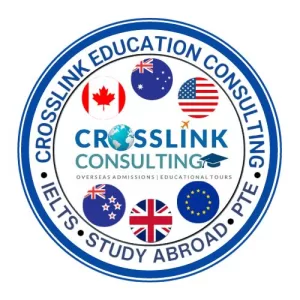When it comes to English proficiency tests, Pearson offers two main options: PTE Academic and PTE Core. Both assessments serve different purposes and cater to distinct audiences. Understanding the differences between PTE Academic and PTE Core is crucial for selecting the right test based on your goals and requirements. In this blog post, we’ll explore the key distinctions between PTE Academic and PTE Core to help you make an informed decision about which test is right for you.
PTE Academic: The Comprehensive Language Proficiency Test
PTE Academic is designed for individuals seeking to study abroad, immigrate, or pursue professional opportunities in English-speaking countries. It assesses all four language skills: Speaking, Writing, Reading, and Listening. The test is computer-based and evaluates proficiency at the academic level, making it ideal for students and professionals aiming for higher education or employment abroad.
Key Features of PTE Academic:
Comprehensive Assessment: It evaluates proficiency in all four language skills, providing a holistic overview of your English language abilities.
Computer-Based Format: The test is entirely computer-based, featuring automated scoring and quick results delivery.
Academic Focus: It is tailored to assess language proficiency at the academic level, making it suitable for university admissions and visa applications.
Global Recognition: It is widely accepted by universities, colleges, and governments worldwide, providing global recognition and credibility.
PTE Core: The Flexible English Proficiency Test
PTE Core, formerly known as PTE General, is a more flexible and general English proficiency test. It assesses proficiency in Speaking, Writing, Reading, and Listening, but with a focus on everyday English language skills rather than academic proficiency. PTE Core is suitable for individuals seeking to demonstrate their English proficiency for personal or professional purposes.
Key Features of PTE Core:
Flexible Assessment: It offers flexibility in test scheduling and content, allowing test-takers to choose from a range of test levels based on their proficiency level and goals.
General English Skills: While, It assesses proficiency in all four language skills, the focus is on everyday English language usage rather than academic proficiency.
Speaking and Writing Only: It offers two versions of the test: Speaking & Writing and Reading & Listening. Test-takers can choose the version that best suits their needs and objectives.
Personal and Professional Use: It is suitable for individuals seeking to assess their English proficiency for personal development, employment opportunities, or immigration purposes.
Choosing the Right Test for You:
When deciding between PTE Academic and PTE Core, consider the following factors:
Academic vs. General Proficiency: Determine whether you need to demonstrate academic-level proficiency or general English language skills.
Test Format and Content: Assess your comfort level with the test format and content of each exam, including the specific skills assessed and the overall structure of the test.
Purpose and Goals: Consider your specific goals, such as university admissions, visa applications, career advancement, or personal development, and choose the test that aligns best with your objectives.
Flexibility and Convenience: Evaluate the flexibility and convenience of each test, including factors such as test scheduling, location availability, and result delivery.
Choosing between PTE Academic and PTE Core depends on your individual goals, proficiency level, and specific requirements. Whether you’re aiming for academic pursuits, professional opportunities, or personal development, selecting the right test is essential for achieving your desired outcomes. By understanding the differences between PTE Academic and PTE Core and considering your goals and preferences, you can make an informed decision and embark on your English language journey with confidence.
Team Crosslink wishes you All the best!


Leave a Reply